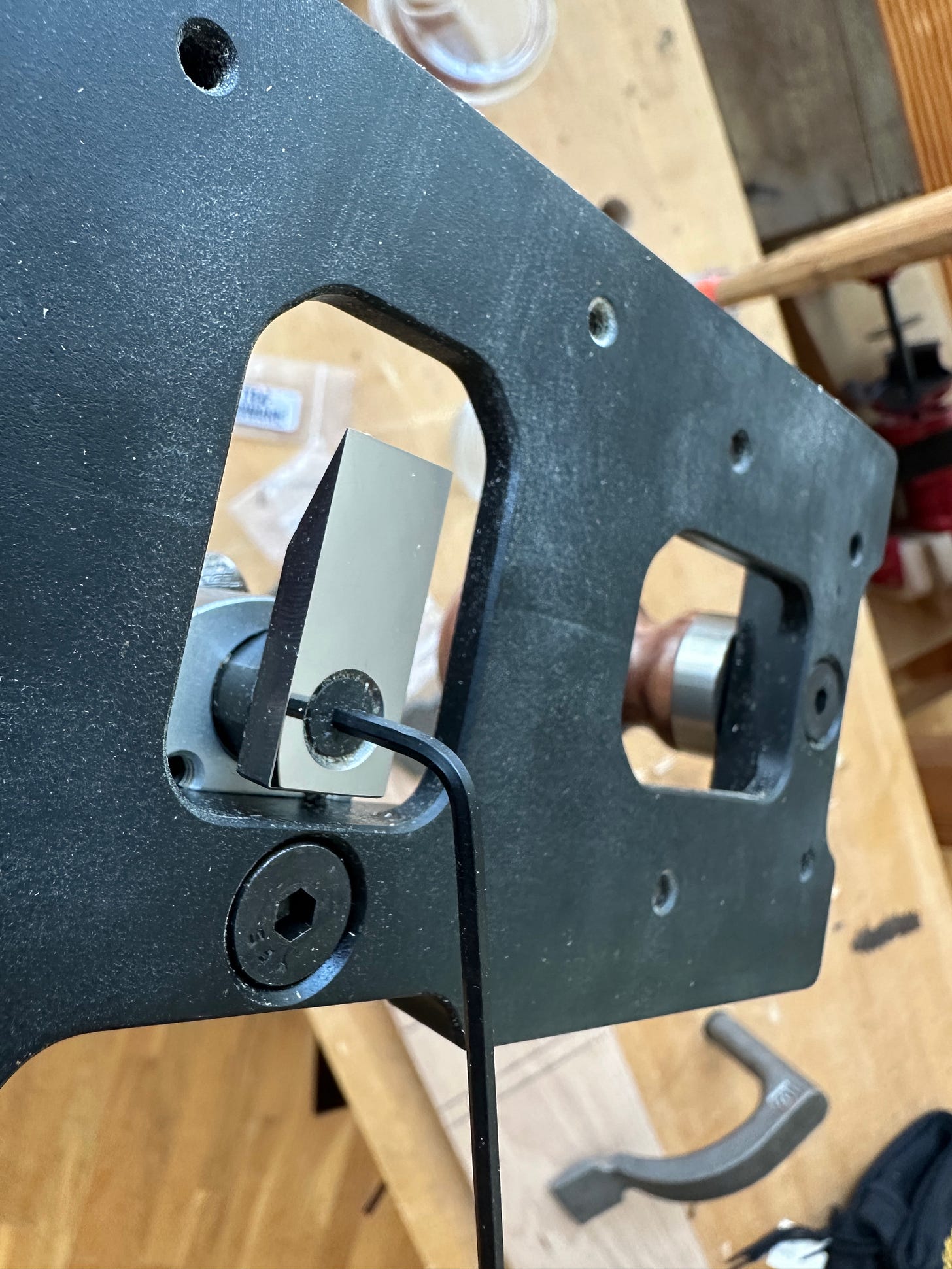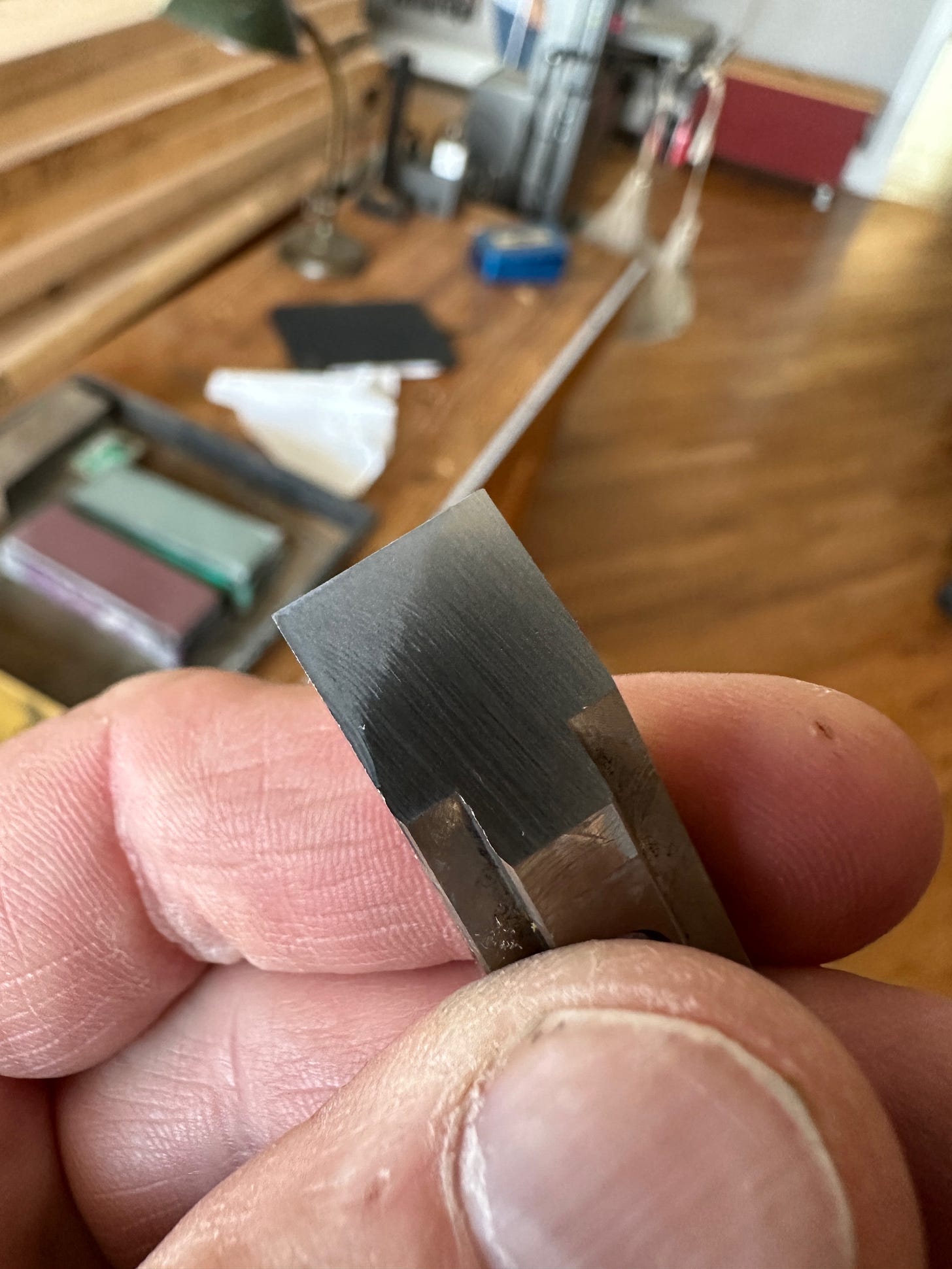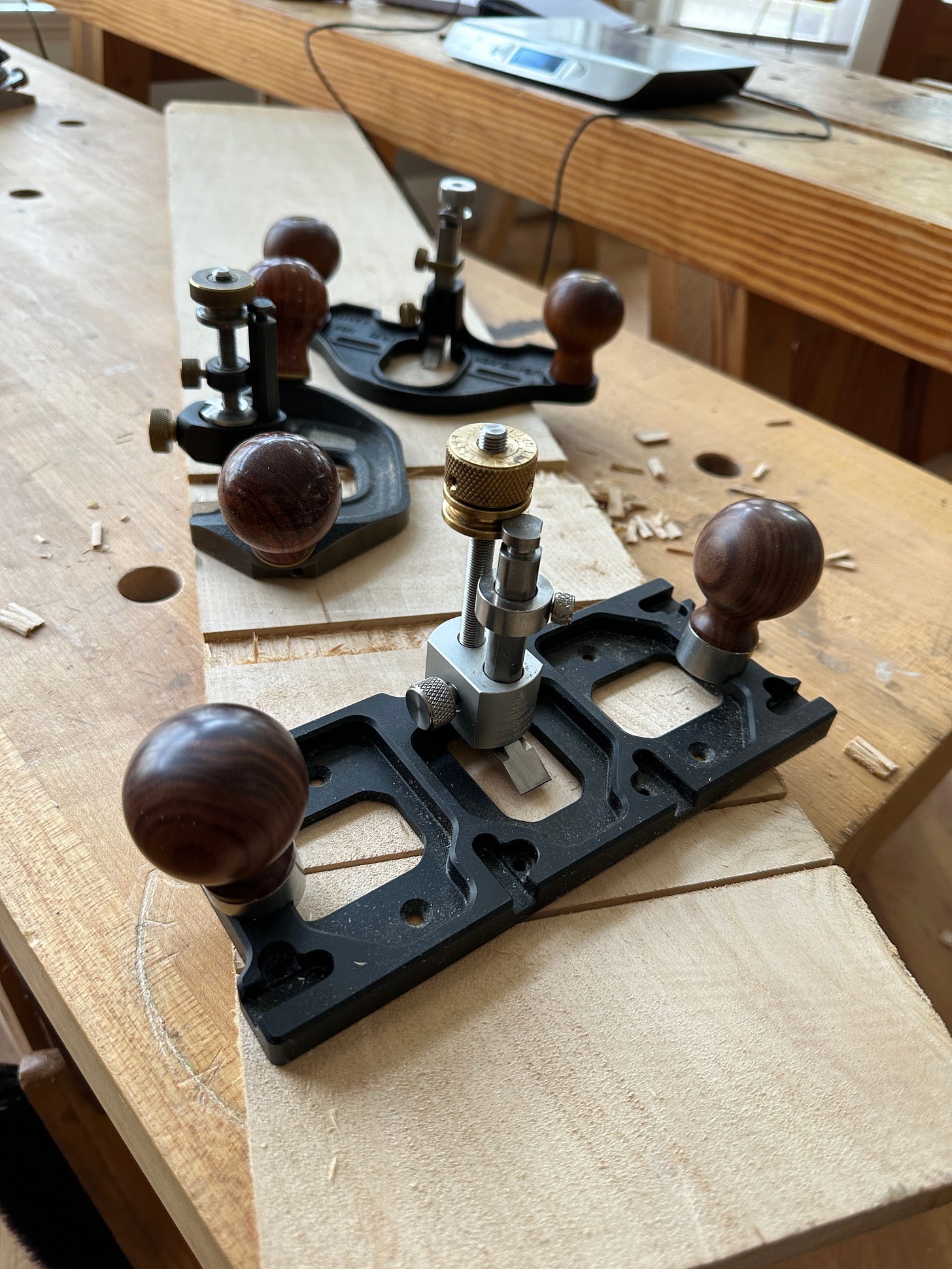Because of Paul “Just Sayin’” Sellers’ love for the Preston/Tyzack form of router plane, the price of vintage versions of the tool have increased ($400 is typical these days), so manufacturers have stepped in to fill the demand.
Several years ago, Walke Moore Tools began making a version that closely followed the Preston. But we were never fast enough to snag one, and I haven’t seen any activity on the Walke Moore site for a while.
Then Blue Spruce/Woodpecker released its interpretation, which we purchased and have had in our shop for more than a month now. The following impressions are from my apprentice, Kale, and me. After so many years at the bench, I can be a bit hidebound. So I wanted to hear Kale’s opinions of the tool. Basically, I handed them the tool and said: “Set it up, figure it out and use it.”
Before I launch into our report, let me say that you might think we are picking nits in some places. And I will tell you: Yes, you are correct. This is a $269.99 router plane (though it’s on sale as I write this…). It’s the most expensive router plane on the market – more expensive than Lie-Nielsen, Lee Valley or the overseas routers. So it deserves the same scrutiny that we give to a Lie-Nielsen or Veritas tool.
About the Tool
So why would you want a big (8-1/2" x 3-1/2") router plane? There have been a few times in my life that I have wanted a bigger base for my router. Once when I was removing the background of a large carving. And several times when I made large sliding dovetails that my regular router plane couldn’t span.
My solution: Screw an acrylic base to my router. Done.
The Preston-format router plane is ideal for those situations above. And it also has this neat trick: You can move the blade assembly to the ends of the tool’s base – basically swapping it out for one of the knobs. This allows you to work in a few (I’m going to say very unusual) circumstances. Or to trim up the cheek of a large (I’m going to say workbench-sized) tenon.
The Blue Spruce version of the tool also added some more features not found on the Preston:
• A depth stop
• A blade that can be removed for sharpening in two ways
• Nicely finished walnut handles that can be reconfigured to suit your grip.
Let’s take a close look at the plane.
The tool is machined in Strongsville, Ohio, and it comes in a Blue Spruce version and a Woodpeckers version. Unless I’m missing something, the primary difference is the handles (walnut vs. aluminum) and some trade dress.

The router base’s casting is ductile iron, which means the tool won’t break if you drop it on a concrete floor. The casting is nicely finished and heavy. The Blue Spruce version weighs a full 3 lbs. (The Lie-Nielsen weighs 1 lb. 11 oz.; the Veritas weighs 2 lb. 1 oz.)
The Blue Spruce casting is covered with a black nitride – not just the top of the casting, but the sole as well. Blue Spruce says this coating reduces friction and corrosion.
Kale and I thought the coating added friction in use. Compared to using our router planes with bare-iron soles, the Blue Spruce was more difficult to push. Some of that might be the additional weight of the Blue Spruce. Some of that could be the wider blade (1/2"-wide vs. 3/8" on the Lie-Nielsen).
But I’m going to go out on a limb and say it felt like the coating. Even when you lightly pulled the tool over the work and it wasn’t cutting, the Blue Spruce felt like it was dragging. The other tools slid over the wood.

Setting Up the Tool
The tool comes disassembled, which is no big deal. And it’s in a nice box and comes with complete instructions. Our tool had two factory defects: One of the handles refused to tighten down (the metal mount for the wood knob was loose) and the blade was ground poorly and was remarkably dull.
All the other stuff we’ve gotten from Blue Spruce has been sharp and perfect, so I’m sure we just got one that was made on a Monday. You are unlikely to experience these problems.
Assembling and using the tool requires three hex-head keys (included). Want to remove the blade to sharpen it? You need a hex key. Want to tighten the depth stop? You need a different hex key. Move the blade post or handle? A third hex key.
This is, honestly, annoying. There is no place on board the tool to store these hex keys of three, so you’re going to have to make a pouch or case to hold them. Don’t get me wrong, I don’t think planes must be “toolless.” A straight-bladed screwdriver is needed for almost all of them. But asking me to keep track of three hex keys for basic operations?
Keep reading with a 7-day free trial
Subscribe to Never Sponsored to keep reading this post and get 7 days of free access to the full post archives.






